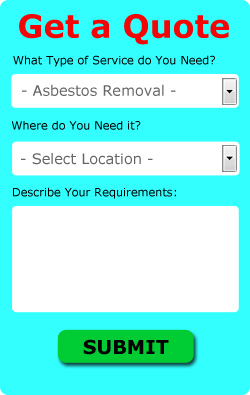Asbestos Removal London Greater London (SW1): Something like five thousand people in the British Isles die from issues caused by asbestos exposure every year, according to figures published by the HSE. If you discover asbestos in your London property or home, and it requires removal, you need to seek the advice of a professional in the asbestos sector before you commence any work. Even if you think a material is asbestos during building or restoration work, you should cease immediately and get hold of an asbestos surveyor to inspect the materials. They'll be able to affirm if the material is asbestos, and the safest method of its removal and disposal.
Specific asbestos construction materials don't require a certified asbestos company to carry out the removal and disposal. However, with the long term health risks to people who come in contact with it, it's generally a better option to bring in expert help from the asbestos removal field. There are lots of legal guidelines in the asbestos industry with which an experienced London asbestos removal contractor must comply in order to safely remove and dispose of any asbestos materials.
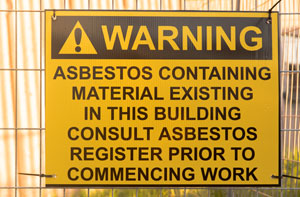
THE HEALTH DANGERS OF ASBESTOS
Asbestos when it is left undisturbed does not carry any health risks. Asbestos can release tiny fibres or particles into the surrounding atmosphere only when cut, abraded or damaged. If these particles are breathed in they find their way into the lungs and are trapped, causing a health condition known as asbestosis. These fibres are also a contributary factor to the development of lung cancer and mesothelioma.
There's no cure known for asbestosis, and the scarring of the lungs due to asbestos fibres is irreversible.
The symptoms of asbestosis could include:
- Wheezing
- Severe Shortness of Breath
- Pain in Your Shoulder or Chest
- Chronic Cough
- Extreme Fatigue
You must seek expert medical advice if you think you've been exposed to asbestos over a long period of time and you have developed symptoms from the above list.
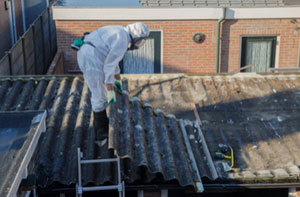
WHAT YOU NEED TO CONSIDER WHEN YOU'RE DEALING WITH ASBESTOS
Asbestos was banned from use in the United Kingdom in 1999, although it wasn't widely used after around 1985. Those who own properties built during this time frame must be careful when redesigning or doing any structural works because of the increased probability of finding asbestos. It was used in items such as ceiling tiles, boiler insulation and pipe lagging and was also used in the form of a spray as a perfect insulation and fire proofing material.
If you do come across asbestos panels or insulation in your property in London, you don't need to panic. It is only when asbestos is interfered with that it can become dangerous to health. In actual fact, in some properties it is better to leave the asbestos in situ and use procedures to make sure it's not going to be damaged. If in doubt about the condition of the asbestos or its potential for health issues, you should talk to a certified asbestos company or surveyor in London.
Specific asbestos products are of a much higher health risk than others. Asbestos cement sheets and roof panels are low risk items, while loose fill insulation, asbestos insulation boards and pipe lagging are all high risk. No matter the risk linked with asbestos, an authorized asbestos removal contractor in London can safely detect, remove and dispose of any materials that are found in your property.
If there is the need for licensed asbestos removal work to be carried out then the Health & Safety Executive or the local authority must be informed, depending on the kind of property and what it's used for. To prevent and limit any potential exposure to asbestos, the Control of Asbestos Regulations 2012 is the legal document that must be observed by your authorised removal contractor.
You are likely to be prosecuted if you perform any asbestos removal that requires permission from the HSE if you don't hold that license.
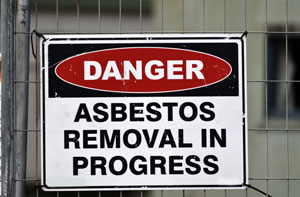
ASBESTOS DISPOSAL London
As soon as the asbestos products have been removed from your London property they have to be treated as hazardous waste. There are stringent practices necessary to dispose of any hazardous waste, especially that containing asbestos. A professional asbestos removal firm in London will conform to all regulations and guidelines outlined by the local authority and the Health & Safety Executive.
Subject to the state of the asbestos, i.e. if it's damaged or loose fibre asbestos, its disposal will be covered by the Carriage of Dangerous Goods Act 2009 (CDG 2009). For safe transport of these hazardous materials, a waste carrier license is essential and the waste can only be disposed of in a government endorsed hazardous waste facility. By employing a certified London asbestos removal company you do not need to bother with such details because they'll observe all regulations and guidance; including the safe-keeping of all documents relating to the work and disposal for at least three years.
THE STAGES OF WORK
You must affirm any supposed instances of asbestos in your London home or property before you begin any actual removal work. Only a certified asbestos surveyor or contractor can legitimately confirm asbestos and the procedures necessary for removing and disposing of it. If you decide not to complete a professional asbestos inspection on an older property, you must anticipate there is asbestos present somewhere and implement all of the necessary precautions.
All testing, surveys and sample-taking should be completed by a certified asbestos surveyor who's not affiliated with your selected asbestos removal company.
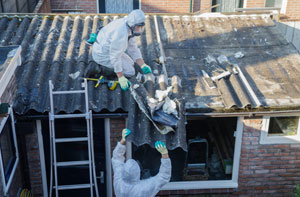
The local authority or HSE must be advised at least 2 weeks before any work starts of any asbestos removal that calls for a registered contractor to perform the work. The required documentation will be supplied by the asbestos removal company and will include: 1. A methodology for the asbestos testing, and the methods of cleaning up the site after work completion by following the 4 stages of clearances. 2. All certificates required by the contractor and its workers to conduct the work, covering; sample testing, work licenses, training, medical, risk assessments and hazardous waste disposal. 3. A work report explaining the regulations and legislation that are going to be followed. 4. If needed, because of the nature of asbestos removal work, there'll be a systematic check of the four stages of clearances and a Certificate of Reoccupation will be granted.
Sufficient PPE (personal protective equipment) will be provided for all persons entering the site, by the asbestos removal company, and they will also ensure the correct disposal techniques for any asbestos waste materials.
PROFESSIONAL ORGANISATIONS, AFFILIATIONS and QUALIFICATIONS
Before you decide on an asbestos removal contractor in London, check their membership of and affiliation with professional associations within the asbestos industry.
ARCA - The Asbestos Removal Contractors Association (ARCA) is the United Kingdom's premier association which represents businesses working within the asbestos sector. By providing guidance, support and training to their members, ARCA is dedicated to encouraging a safe working environment within the asbestos removal industry.
ATaC - Asbestos surveyors, testing laboratories and analysts will normally be affiliated with ATaC, the Asbestos Testing Consultancy Association. ATaC is an approved UKAS affiliate and offers recognition to its membership in this specialist industry.
UKATA - The nonprofit organisation, UKATA (the United Kingdom Asbestos Training Agency), dedicates itself to improving industry standards by supplying the highest quality courses and training for anybody involved with asbestos. From large companies to homeowners, it offers instantly recognisable qualifications that can be authenticated and checked via their online portal.
Asbestos removal services and asbestos surveys are available to home and business owners in London and also in nearby locations like Southwark, Shepherds Bush, Havering, Barnet, Camden, Pimlico, Knightsbridge, Victoria, Churchill Gardens, Mayfair, Haringey, Brent, Greenwich, Hackney, Waterloo, Vauxhall, Covent Garden, Bexley, Waltham Forest, Whitehall, St James's, Belgravia, Islington, Croydon, Hounslow, Kensington, Bromley, Kingston upon Thames, and in these postcodes: NW1 4QP, NW1 5BW, NW1 4PN, NW1 4RZ, EC4Y 9DH, NW1 5GF, NW1 5EY, NW1 5GX, EC4Y 1BB, and NW1 5BR. Locally based London asbestos removal specialists will likely have the phone code 020 and the postcode SW1. Verifying this can ensure that you access local providers of asbestos removal. London homeowners will be able to utilise these and many other related services. Just click the "Quote" banner to obtain price quotes for asbestos removal.
Asbestos Surveys London

There's a fairly good chance that any home or building put up in London during the period 1850 to 1999 will contain asbestos in some way, shape or form. A popular building material for over 100 years, it was especially popular thanks to its heat and chemical resistant properties. It was pinpointed as causing various health issues such as mesothelioma, lung cancer, esophageal cancer, asbestosis, kidney cancer and pleural thickening during the 1970s and 1980s.
In 1985 both blue (crocidolite) and brown (amosite) asbestos was banned in the British Isles, and in 1999 asbestos was banned completely. Obviously asbestos materials remain in many structures that were built prior to 1999, and for that reason asbestos surveys are needed in many scenarios.
There are 2 different types of asbestos survey that buildings in London can undergo.
- Asbestos Management Surveys (formerly Type 2)
- Asbestos Refurbishment/Demolition Surveys (formerly Type 3)
Asbestos Management Surveys London: Asbestos Management Surveys are generally carried out in buildings in London that are occupied, with the intention of determining where and what forms of asbestos exist, to make certain they present no risk to occupants, and to ensure they aren't disturbed or damaged during normal daily activities or during routine maintenance work like piping or cabling. So long as ACMs are in sound condition and are left undisturbed, they do not present much risk to the occupants of a building. However, when they're disturbed, damaged or in bad condition minute asbestos fibres can be released, causing potential risk.
Asbestos Refurbishment/Demolition Surveys London: When a building or premises in London is due to be demolished or restored an Asbestos Refurbishment/Demolition Survey will be necessary. As a significant amount of structural damage can occur during an ARD survey these are typically only undertaken on London buildings that are unoccupied or vacant. ARD surveys must be done before any demolition, refurbishment or upgrading work begins. The presence of any asbestos containing materials will be established during this survey, and strategies to safely remove or manage such materials can be put into action. Regardless of the scale of the restorations and refurbishments, any occupants, professionals and management agents involved will have the responsibility of organising these ARD surveys, in keeping with the Control of Asbestos Regulations (2012). (Tags: Asbestos Managements Surveys London, Asbestos Surveys London, Asbestos Survey London).
Asbestos Encapsulation London
Asbestos encapsulation is a crucial technique used to manage asbestos-containing materials (ACMs) without removing them. Coating a sealant to the ACMs in this process prevents the release of asbestos fibres. Ensuring the environment safer for occupants, encapsulating the material greatly reduces the risk of exposure.
When compared to complete removal, the main advantage of asbestos encapsulation is its cost-effectiveness. Since encapsulation is less disruptive, buildings are able to remain operational during the process. Additionally, it offers a robust solution that can last for many years, guaranteeing prolonged protection against exposure to asbestos.
However, the encapsulation of asbestos demands meticulous planning and execution by skilled professionals. Regular inspections are essential to ensure the sealant remains intact and to check the condition of the encapsulated material. Should any damage occur, prompt repair is essential to ensure safety and health regulation compliance. (Asbestos Encapsulation London)
Asbestos Garage Roof Removal London
Removing an asbestos garage roof entails safely removing old roofing materials that contain asbestos. Asbestos was commonly used in roofing owing to its durability and fire-resistant properties, but it is now recognised to pose serious health risks. Special care and professional handling are required to remove an asbestos roof and prevent the release of harmful fibres.
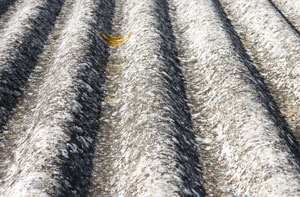
Hiring a licensed asbestos removal company is the initial step in asbestos garage roof removal. These professionals have the training to safely dismantle and dispose of asbestos materials. They will seal off the area to prevent contamination and use protective gear to ensure their safety.
After removing the roof, the asbestos material is carefully packaged and transported to a certified disposal site. To make sure that no asbestos fibres remain, the removal team will then carefully clean the area. This process complies with health regulations and makes sure the garage is safe to use in the future. (Asbestos Garage Roof Removal London)
Asbestos Floor Tile Removal
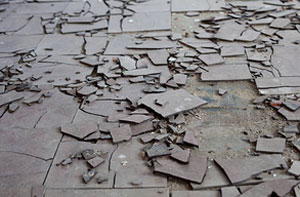
Asbestos floor tile removal is a hazardous and challenging process that requires careful handling and effective safety measures. Asbestos, a naturally sourced mineral, was widely used in floor tiles in the past due to its durability and heat-resistant qualities. However, it has since been linked to various medical conditions, including asbestosis, mesothelioma and lung cancer, when the asbestos fibres become airborne and are inhaled.
Removing asbestos floor tiles calls for specialist protective clothing and equipment, such as disposable coveralls, gloves and respirators, to prevent exposure to the harmful asbestos fibres. The guidelines issued by regulatory bodies like the HSE must be followed to ensure the safe removal and disposal of asbestos waste and floor tiles.
Asbestos floor tile removal should only be carried out by certified professionals with the necessary experience and training to minimise the risk of exposure to asbestos. Thorough cleaning and testing for any remaining asbestos fibres are necessary after the removal of the floor tiles from the area.
Artex Removal London
It was a common occurrence back in the nineteen seventies and eighties, for contractors and do-it-yourself enthusiasts, to apply Artex coatings to the walls and ceilings of houses in London. The flexible, textured finish of this product was efficient for masking inconsistencies, cracks and defects in these surfaces. For ceilings, Artex largely replaced the earlier craze of polystyrene tiles which had been identified as a fire risk.

The paradoxical point about this is that Artex contains asbestos, so one hazardous material was just being substituted for another. The real perils of asbestos in building materials weren't of course fully recognised at that time, and it was not banned in the UK until the late 90s. Providing that this material is not disturbed, it is mostly safe, and its a good job, since there are still countless homes in London which have Artex coated walls and ceilings.
If you have Artex on the walls or ceilings of your house in London, you should never try to get rid of it yourself. Despite the fact that the removal of textured coatings is currently classed as non-licenced work, the correct training is still crucial. The best way to get your Artex removed is to call in a local London asbestos removal company, who'll go through the proper processes for safely inspecting and removing the offending Artex from your property. (Tags: Asbestos Artex Removal London, Textured Coating Removal London, Removing Artex London, Artex Removal London).
Ground Remediation Services
Land or ground remediation is the process of cleaning up and restoring groundwater or contaminated soil, making the land safe for use once more. The process is commonly employed in areas that have been polluted with hazardous substances, including industrial chemicals, heavy metals or pesticides. The purpose of ground remediation is to lower the amount of contaminants to an acceptable level, making the land safe for use once again. In essence, excavation, soil washing and bioremediation are among the different methods of ground remediation that can be used. The remediation approach that is selected will be based on several factors, such as the extent and type of contamination, together with the environmental conditions and site characteristics. The task of ground remediation is often intricate and prolonged, necessitating skilled professionals and specialised tools. Working alongside experienced specialists is essential to guaranteeing the remediation process is completed safely and successfully. To sum up, ground remediation is a vital process of restoring contaminated soil and water, and its success is contingent upon selecting the correct method for each individual scenario and working alongside skilled professionals to guarantee safety and efficacy.
Asbestos Awareness Courses
Anyone who could potentially come into contact with asbestos in their workplace should definitely consider taking asbestos awareness courses. This is particularly relevant for builders, electricians, decorators, and maintenance staff. Such courses give you a solid grasp of what asbestos is, where it might be found, and why it's so perilous. Given that asbestos was prevalent in building materials until the late 1990s, older properties in London could still have it present. The first step to keeping yourself and others safe is knowing how to recognise materials that may contain asbestos.
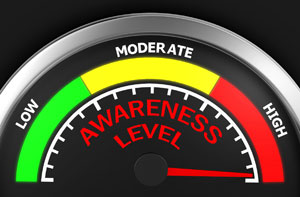
One of the crucial elements of asbestos awareness training is recognising the dangers associated with being exposed to asbestos. When asbestos fibres are inhaled, they can cause serious health conditions, including lung cancer, asbestosis, and mesothelioma. Since these health issues may take years to develop, it's really important to be aware of the risks today; even minimal exposure can lead to long-lasting effects. Such awareness courses aid individuals in London in understanding these risks comprehensively, making them more equipped to handle scenarios in which asbestos might be present.
It's important to note that these courses don't actually prepare you to remove asbestos; that requires the skills of licensed professionals. Instead, they are centred around recognising materials that could contain asbestos, understanding the appropriate actions to take when asbestos is suspected, and becoming familiar with the safety regulations involved. Knowing when to call in the experts can help you avoid accidentally disturbing asbestos and minimise health threats.
Investing in asbestos awareness training is a wise choice for anyone who works in environments where asbestos might be found. By dedicating time to understand and acknowledge the dangers, workers in London can tackle their jobs with confidence, ensuring the safety of themselves, their colleagues, and anyone else who may be present from this hidden risk. (Tags: Asbestos Awareness Courses)
Asbestos Air Monitoring London
Asbestos air monitoring is an exhaustive procedure employed to assess and ensure the safety of air quality in environments that could potentially be contaminated with airborne asbestos fibres. This process involves the methodical sampling of the air for the presence of these dangerous fibres. The objective is to measure the quantity of airborne asbestos fibres and to determine whether they pose a threat to the health of occupants, workers or residents.

Competent asbestos professionals perform air monitoring, using specialised equipment. Air sampling devices are placed strategically in areas where asbestos removal or disturbance is taking place. The samples are analysed in accredited laboratories after collection to determine the quantity and type of asbestos fibres present, which were collected by these devices within a stipulated timeframe.
Critical purposes are served by asbestos air monitoring, whose importance is paramount.
- Risk Assessment: Asbestos air monitoring is an essential tool for assessing the level of asbestos exposure risk during activities such as asbestos removal, renovation or maintenance, to ensure safety. This enables informed decisions to be made about the need for protective measures.
- Regulatory Compliance: Asbestos management is strictly regulated in many countries, including the United Kingdom, and asbestos air monitoring plays a crucial role in ensuring compliance with this legislation and in documenting the safety measures taken.
- Worker Safety: Air monitoring is a critical tool for individuals involved in asbestos-related work, such as asbestos removal contractors, maintenance staff, and construction workers, to ensure their safety by providing real-time data on the effectiveness of containment measures and the need for personal protective equipment.
- Public Health: Asbestos fibres are minute and capable of travelling through the air, potentially spreading beyond the work area to nearby buildings or people passing by. Air monitoring aids in protecting the adjoining community from inhaling these dangerous fibres.
- Verification of Abatement: After asbestos removal or control measures have been implemented, air monitoring is generally carried out to confirm that the area is safe for reoccupation. This prevents potential exposure to lingering asbestos fibres.
Conclusion: Asbestos air monitoring serves as a key barrier against the health risks posed by asbestos exposure. Offering accurate data on airborne asbestos fibre levels, this service ensures timely interventions, protects public and worker health, and maintains regulatory compliance. Diseases caused by asbestos exposure have a long latency period, sometimes taking decades to show symptoms. Thus, proactive asbestos air monitoring is vital in preventing future health crises and protecting those living and working in areas with potential asbestos threats. (72754 - Asbestos Air Monitoring London)

Other London Trades: When you're looking for asbestos removal in London, you may also require the professional services of other specialists, for instance you might need garden clearance in London, a bricklayer in London, SKIP HIRE in London, home maintenance in London, a painter & decorator in London, a basement conversion specialist in London, removal services in London, a handyperson in London, a carpenter & joiner in London, a flooring specialist in London, timber treatment in London, a roofer in London, waste removal in London, or other London tradespeople.
Asbestos Removal Near London
Also find: Waterloo asbestos removal, Kingston upon Thames asbestos removal, Barnet asbestos removal, Islington asbestos removal, Haringey asbestos removal, Shepherds Bush asbestos removal, Brent asbestos removal, Vauxhall asbestos removal, Hounslow asbestos removal, Kensington asbestos removal, Croydon asbestos removal, Victoria asbestos removal, Knightsbridge asbestos removal, Bromley asbestos removal, Hackney asbestos removal, Pimlico asbestos removal, Southwark asbestos removal, St James's asbestos removal, Mayfair asbestos removal, Bexley asbestos removal, Waltham Forest asbestos removal, Belgravia asbestos removal, Greenwich asbestos removal, Whitehall asbestos removal, Churchill Gardens asbestos removal, Covent Garden asbestos removal, Camden asbestos removal, Havering asbestos removal and more. Those who are searching for asbestos removal, will discover that these services are available in the majority of these areas. Residents in the region can obtain estimates for asbestos removal by going here.
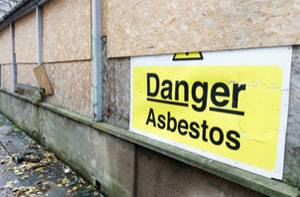 Asbestos Removal London
Asbestos Removal London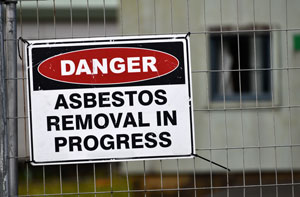 Asbestos Removal Near Me
Asbestos Removal Near Me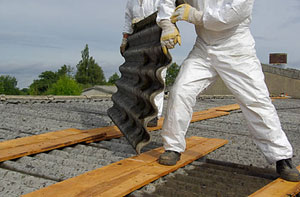 Asbestos Removal Companies London
Asbestos Removal Companies LondonLocal Asbestos Removal Enquiries

The latest asbestos removal postings: Mrs Jasmine Parker was asking about an asbestos removal contractor to remove the artex from a ceiling in her terraced house in Islington. Ms Morgan Williams from Hounslow wants someone to remove some fire doors which contain asbestos. Mr Stephen Dixon from Hackney wants someone who will safely remove a shed roof that's made from asbestos. In Greenwich, Justin and Samantha Day are on the lookout for someone who can take down a partition wall that contains asbestos. In Waltham Forest, Nathan and Amber Reid are trying to find somebody who will remove a garage roof made of asbestos. David Marsh needed an asbestos survey done on his detached house in Waltham Forest. Andrew and Jennifer Black were wanting to get an insurance quote from an asbestos removal contractor in Hounslow who can remove some asbestos roofing from a collapsed garage outside their terraced home. Sarah Simpson from Hounslow asked "is there anyone who does asbestos removal near me?". In Bexley, Sean and Madison Harris are trying to find somebody who will remove a garage roof made of asbestos. Michael and Melissa Adams needed a quote for removing some asbestos lagging from their semi-detached home near Haringey. Benjamin Lee needed an asbestos survey done on his detached house in Waltham Forest. Matthew Russell needed a quote for removing some asbestos floor tiles in his terraced property near Croydon. Richard Green was wanting to get a price quote from an asbestos removal contractor in Barnet who can safely remove the asbestos roof from a small barn. All of these local property owners searched for "asbestos removal near me" and came across this website on either Bing, Yahoo or Google.
Asbestos Removal Tasks London
Asbestos removal specialists should be able to help with asbestos removal price quotes, residential asbestos surveys, corrugated asbestos removal in London, industrial asbestos removal, fly tipping clearance, asbestos replacement, asbestos garage roof removal, house clearance, asbestos testing in London, asbestos management, soft strip demolition, landlord asbestos survey, soft-strip demolition, asbestos roof tile removal, asbestos surveys in London, ethical asbestos disposal, asbestosis prevention, asbestos risk assessments, asbestos air monitoring, hazardous waste removal, office clearance, the identification of asbestos containing materials (ACMs), asbestos pipe lagging removal, environmental cleaning, asbestos removal services, asbestos waste removal, asbestos encapsulation, Artex asbestos removal, the removal of asbestos in London, unsafe asbestos removal, and other hazardous waste related work. These are just some of the activities that are accomplished by those installing asbestos removal. London providers will be delighted to keep you abreast of their full range of asbestos services.
More: Asbestos Encasement, Removal Contractors, Asbestos Management, Asbestos Removal Services, Asbestos Survey, Removal Contractors, Removal Contractors, Asbestos Disposal, Asbestos Survey, Asbestos Collection, Asbestos Management, Asbestos Inspections, Asbestos Removal Services, Artex Removal, Asbestos Abatement, Asbestos Encasement, Asbestos Testing, Hazardous Waste Disposal, Asbestos Risk Assessment, Removal Contractors, Asbestos Surveys, Asbestos Sampling, Hazardous Waste Removal, Asbestos Encasement, Cheap Asbestos Removal, Asbestos Testing, Asbestos Abatement, Asbestos Inspections, Waste Removal, Asbestos Survey, Asbestos Encapsulation, Asbestos Management, Asbestos Disposal, Asbestos Survey, Cheap Waste Removal.
Removing Asbestos London - Asbestos Removal Quotations London - Hazardous Material Removal London - Asbestosis London - Asbestos Survey London - Asbestos Encapsulation London - Asbestos Disposal London - Commercial Asbestos Removal London - Asbestos Removal London

